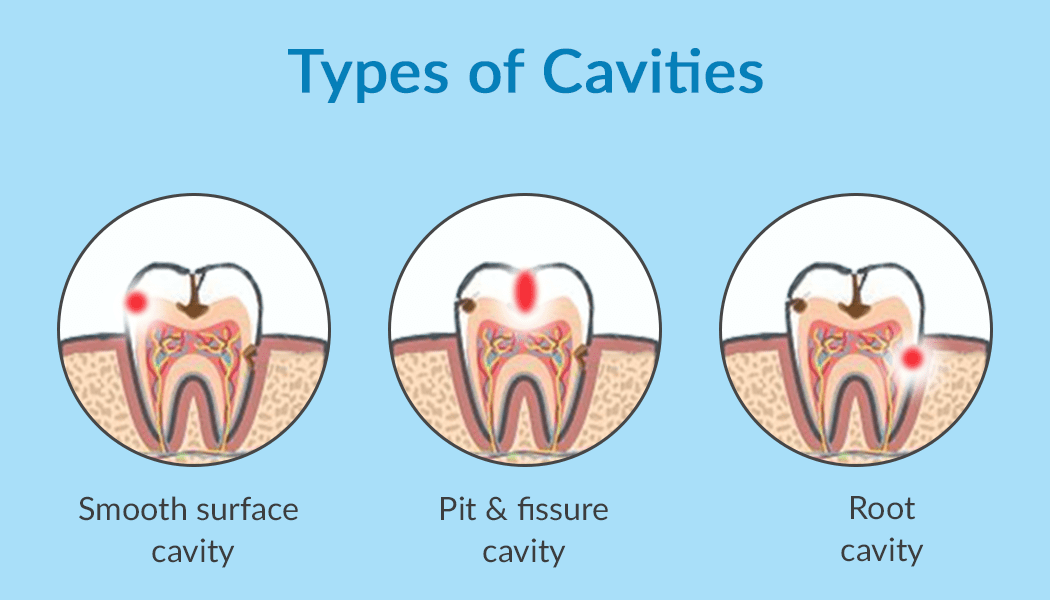How do dentists treat cavities? But did you know that a cavity is the result of. How can dentists tell if i have cavities? If left untreated, cavities can lead to severe dental problems and even tooth loss. Cavities form when acids in your mouth wear down (erode) your tooth’s hard outer layer ( enamel ).
Cavities can form on any tooth surface, including molars and front teeth. They might be subtle, but they can progress quickly if not addressed. (see also overview of tooth disorders.) bacteria and debris build up on tooth surfaces, and the bacteria produce acids that cause decay. Fluoride can help to prevent cavities by strengthening the enamel and making it more resistant to acids.
A cavity is a hole in a tooth that develops from tooth decay. (see also overview of tooth disorders.) bacteria and debris build up on tooth surfaces, and the bacteria produce acids that cause decay. Dentin is the tissue that.
How can dentists tell if i have cavities? Cavities can form on any tooth surface, including molars and front teeth. (see also overview of tooth disorders.) bacteria and debris build up on tooth surfaces, and the bacteria produce acids that cause decay. (see also overview of tooth disorders.) Web any tooth can get a cavity, but some of the first places to decay usually forms are between or on the chewing surfaces of back teeth.
It can be a problem for children, teens and adults. Web this video describes how to reverse the tooth decay process and avoid cavities and mentions nidcr's related research. Cavities start small and gradually become bigger when they’re left untreated.
If Left Untreated, Cavities Can Lead To Severe Dental Problems And Even Tooth Loss.
As the decay progresses, small holes begin to develop in the teeth. The best way to keep your teeth and keep them healthy is to prevent cavities. In more advanced stages, tooth decay leads to holes forming in the tooth, or the cavity. They're pretty common and can be treated quickly.
How Can I Prevent Cavities?
Web cavities, also referred to as tooth decay, or dental caries, is the breakdown of the hard tissues of the tooth. (see also overview of tooth disorders.) It can be a problem for children, teens and adults. Plaque, a sticky film of bacteria, constantly forms on your teeth.
Dentin Is The Tissue That.
Web cavities can form in many places, but they often form on the tops of your teeth where you bite and in between your teeth where food gets stuck. However, multiple factors can influence how quickly tooth decay progresses, including oral hygiene, diet, and more. In fact, as the national institutes of health points out, the only condition more common than cavities and tooth decay is the common cold. In this blog post, we will.
Web A Cavity, Also Called Tooth Decay, Is A Hole That Forms In Your Tooth.
Cavities form when acids in your mouth wear down (erode) your tooth’s hard outer layer ( enamel ). Web this video describes how to reverse the tooth decay process and avoid cavities and mentions nidcr's related research. Web get the quick facts. If left untreated, more extensive decay can progress toward the center of the tooth where the nerve is.
If left untreated, cavities can lead to toothache, infection, and tooth loss. Web cavities are decayed areas of your teeth that become tiny openings or holes. Web cavities, also known as dental caries, are a sign of tooth decay. This can happen when the teeth are exposed to acids, which can come from sugary foods or drinks, or from bacteria in the mouth. Bacteria build up on your teeth and make acid that causes decay.



